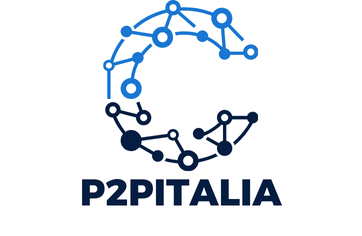Facebook Ads represent a powerful tool for UK non-profits to unlock fundraising potential. However, successfully leveraging this platform requires strategic approach. With the right targeting, messaging, and engagement tactics, your organization can effectively reach supporters, increase donations, and expand your network. Discover tailored strategies to maximise your impact on Facebook Ads, connect authentically with your audience, and transform your fundraising efforts into a resounding success. Embrace the digital landscape and watch your mission thrive.
Understanding the Importance of Facebook Ads for Non-Profits
In the realm of digital marketing strategies, Facebook Ads stand out as a powerful tool for non-profits. With over 2.8 billion active users, Facebook offers an unparalleled reach, enabling non-profits to connect with a diverse audience. The platform's demographic data allows organisations to target specific groups based on age, interests, and location, making it an ideal choice for non-profit fundraising.
In parallel : Transforming Patient Care: Unleashing the Power of Telemedicine in the UK Healthcare System
Utilising Facebook Ads in fundraising campaigns can significantly enhance visibility and engagement. These ads can be tailored to highlight specific causes, encouraging potential donors to contribute. By leveraging Facebook's advanced targeting options, non-profits can efficiently allocate their budgets, ensuring that their message reaches those most likely to support their mission.
Several case studies illustrate the effectiveness of Facebook Ads in non-profit campaigns. For instance, a wildlife conservation organisation successfully used targeted ads to raise awareness and funds for endangered species. By crafting compelling visuals and narratives, they captured the attention of animal lovers worldwide, resulting in a substantial increase in donations.
Also to discover : Building an All-Encompassing Cybersecurity Strategy for Fintech Startups in the UK: A Step-by-Step Guide
Another example is a health-focused non-profit that utilised Facebook Ads to promote a fundraising event. By targeting local community members and sharing impactful stories, they not only filled the event but also exceeded their fundraising goals. These examples underscore the potential of Facebook Ads to transform non-profit fundraising efforts.
Identifying Target Audiences
In the realm of non-profit outreach, precise audience segmentation is crucial for effective communication and fundraising. Defining target demographics involves understanding the characteristics of those most likely to support your cause. This includes analysing age, location, interests, and behaviours.
Utilising Facebook's Audience Insights
Facebook's audience insights tool is a treasure trove for targeting strategies. It provides non-profits with the ability to delve into user demographics, interests, and online behaviours. By leveraging this data, organisations can create highly tailored ads that resonate with potential donors. For instance, if a non-profit focuses on environmental conservation, they can target users who have shown interest in sustainability and eco-friendly practices.
Strategies for Segmenting Audiences
Effective audience segmentation goes beyond basic demographics. It involves grouping potential supporters based on shared interests and behaviours. For example:
- Interest-Based Segmentation: Target individuals who engage with environmental content if your cause is related to conservation.
- Behavioural Segmentation: Focus on users who frequently donate to similar causes or participate in related events.
- Geographical Segmentation: Tailor messages to local communities for region-specific campaigns.
By implementing these targeting strategies, non-profits can enhance their outreach, ensuring their message reaches those most likely to engage and support their mission. This strategic approach not only maximises the impact of each campaign but also optimises resource allocation, ensuring every dollar spent contributes effectively to the cause.
Crafting Compelling Ad Content
Creating engaging ad content is pivotal for non-profits aiming to capture attention and drive action. The art of ad copywriting involves crafting messages that resonate with your audience's values and emotions. Start with a clear and compelling headline that draws the viewer in, followed by concise and persuasive body text. Highlight the impact of donations or support, making the reader feel part of a meaningful cause.
The Power of Visual Content
Visuals play a crucial role in enhancing ad appeal. High-quality images or videos can significantly boost engagement, making the message more relatable and memorable. Incorporating storytelling through visuals helps convey the mission and urgency of the cause. For instance, a series of images showcasing the journey of an animal rescue can evoke empathy and inspire action.
Effective Engagement Strategies
To maximise engagement, utilise call-to-action phrases that are direct and compelling. Phrases like "Join Us in Making a Difference" or "Donate Now to Save Lives" create a sense of urgency and purpose. Additionally, consider using interactive elements such as polls or quizzes to engage users further. By combining these strategies, non-profits can craft ads that not only capture attention but also inspire meaningful interactions and support.
Setting Budget and Bidding Strategies
Navigating the world of ad budgeting can be daunting for non-profits, yet it is essential for cost-effective advertising. Determining an appropriate budget involves assessing the campaign goals and the potential reach. Start by defining clear objectives, whether it’s raising awareness, increasing donations, or promoting events. This clarity helps in allocating resources efficiently.
Overview of Bidding Strategies on Facebook
Facebook offers several bidding techniques to maximise ad performance. The platform allows for manual or automatic bidding, each with its benefits. Manual bidding gives control over the maximum amount you're willing to pay per action, ideal for those with specific cost constraints. Automatic bidding, on the other hand, optimises for the best results within your budget, saving time and effort.
Tips for Optimising Ad Spend
To ensure your ad spend yields maximum impact, consider these strategies:
- Set a Daily or Lifetime Budget: This controls spending and ensures funds are utilised effectively.
- Monitor and Adjust: Regularly review ad performance to identify areas for improvement.
- A/B Testing: Experiment with different ad formats and messages to see which resonates best with your audience.
By employing these budgeting and bidding techniques, non-profits can enhance their advertising efforts, making every dollar count in their mission to drive change.
Creating and Managing Facebook Ad Campaigns
The journey of ad creation begins with a clear understanding of your campaign goals. Facebook Ads Manager is a robust tool that guides you through the process. Start by selecting your campaign objective, whether it’s increasing awareness, driving traffic, or boosting donations. This choice tailors the tools and features available to you, ensuring alignment with your goals.
Step-by-Step Guide to Setting Up Facebook Ads
- Define Your Campaign Objective: Choose from options like brand awareness or conversions.
- Select Your Audience: Use detailed targeting to reach your ideal supporters.
- Design Your Ad: Craft engaging visuals and compelling ad copy.
- Set Your Budget and Schedule: Determine daily or lifetime budgets and ad duration.
- Review and Launch: Double-check settings and launch your campaign.
Tools and Features in Facebook Ads Manager
Facebook Ads Manager offers a suite of features for effective campaign management. Use the dashboard to monitor ad performance and make adjustments as needed. The platform provides insights into metrics like reach, engagement, and conversions, crucial for performance tracking.
Importance of A/B Testing in Ad Campaigns
A/B testing is vital for refining ad strategies. By experimenting with different ad elements, non-profits can identify what resonates best with their audience, enhancing overall campaign effectiveness.
Measuring Success and Analyzing Performance
To gauge the effectiveness of non-profit Facebook ads, it is crucial to focus on key performance indicators (KPIs). These metrics provide insights into how well your ads are performing and can guide future strategies. Common KPIs include engagement rates, click-through rates (CTR), and conversion rates. Each of these metrics offers a different perspective on ad effectiveness, helping non-profits assess whether their objectives are being met.
Understanding Facebook's analytics tools is essential for accurate performance analysis. Facebook Insights and Ads Manager offer comprehensive data on ad reach, impressions, and user interactions. These tools allow non-profits to track the progress of their campaigns in real-time, providing valuable feedback on what is working and what needs adjustment.
For effective performance analysis, non-profits should regularly review their ad data. Techniques such as comparing current metrics with past performance or industry benchmarks can highlight areas for improvement. Additionally, calculating the return on investment (ROI) helps determine the financial effectiveness of ad spend. By analysing the ratio of revenue generated to the cost of advertising, non-profits can make informed decisions about future campaigns.
By leveraging these techniques, non-profits can ensure their advertising efforts are both impactful and resource-efficient.
Leveraging Facebook Fundraising Tools
Facebook offers an array of fundraising features specifically designed to support non-profits in their mission. These tools are invaluable for organisations looking to amplify their reach and boost donations. One of the standout donation tools is the ability to integrate donation buttons directly into Facebook posts and ads, simplifying the process for potential donors. This feature allows supporters to contribute without leaving the platform, enhancing the likelihood of spontaneous donations.
Non-profits can also create fundraising events on Facebook, enabling them to promote specific campaigns and engage with their audience in real-time. These events can be linked to ads, ensuring maximum visibility and participation. By using Facebook's event tools, organisations can track attendance, manage RSVPs, and keep attendees updated on campaign progress.
Encouraging community engagement is another critical aspect of Facebook's fundraising capabilities. Non-profits can leverage Facebook groups to foster a sense of community among supporters. These groups serve as a platform for sharing updates, discussing strategies, and rallying support for various causes. By nurturing a community of engaged supporters, non-profits can create a dedicated network of advocates who are more likely to participate in fundraising activities and spread the word about the organisation's mission.
Case Studies of Successful Non-Profit Campaigns
Exploring success stories in non-profit marketing provides valuable insights into effective strategies. Notable campaigns have demonstrated how non-profits can leverage Facebook Ads to achieve remarkable results.
One exemplary case is a children's education charity that crafted a campaign focusing on donor impact. By showcasing best practices in storytelling, they highlighted individual success stories, generating emotional connections. This strategy resulted in a 50% increase in donations, illustrating the power of personal narratives in fundraising.
Another success story involves a non-profit dedicated to providing clean water. They employed a multi-phase approach, starting with awareness ads that educated the audience about the issue. Follow-up ads encouraged donations by demonstrating tangible outcomes, like wells built. This strategic layering of content led to a 40% rise in donor engagement.
Lessons learned from these campaigns emphasize the importance of clear messaging and targeted storytelling. Non-profits should focus on communicating the direct impact of donations, as this resonates deeply with potential supporters. Additionally, segmenting campaigns into phases can sustain interest and drive continued engagement.
By analysing these success stories, non-profits can adopt proven strategies, tailoring them to their unique missions. Implementing these best practices can enhance the effectiveness of future campaigns, ensuring that efforts are both impactful and resource-efficient.
Future Trends in Facebook Advertising for Non-Profits
As the landscape of digital non-profit marketing evolves, staying ahead of advertising trends is crucial for organisations aiming to maximise their impact. Emerging trends in social media advertising suggest a shift towards more personalised and interactive content. Non-profits must adapt by crafting engaging narratives that captivate their audience.
Emerging Trends in Social Media Advertising
One significant trend is the rise of video content. Short, impactful videos are becoming a staple in capturing attention and conveying messages succinctly. Additionally, the integration of augmented reality (AR) in ads offers immersive experiences, allowing supporters to engage with causes in novel ways.
Predictions for Non-Profit Advertising on Facebook
Looking ahead, future insights indicate that artificial intelligence (AI) will play a pivotal role in refining ad targeting and personalisation. AI can analyse user data to predict behaviours, enabling non-profits to tailor their campaigns more effectively. Moreover, as privacy regulations tighten, transparency in data usage will become paramount, influencing how ads are crafted and deployed.
Preparing for Changes in Audience Behaviour and Technology
To remain competitive, non-profits should invest in understanding audience behaviour and emerging technologies. This involves continuously testing new ad formats and platforms to determine what resonates best with their audience. By embracing these changes, non-profits can ensure their advertising strategies remain relevant and impactful.











